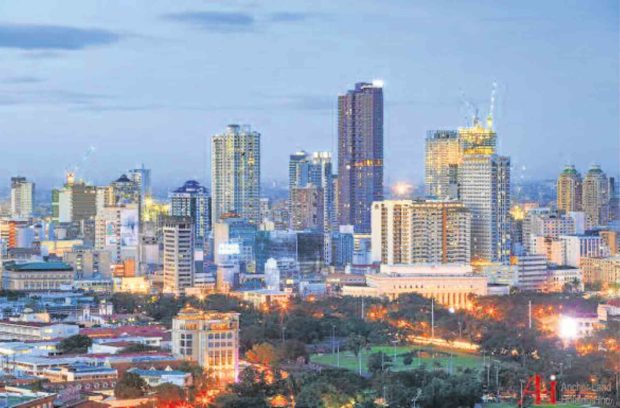PH seen unlikely to hit 2021 economic targets
The prolonged COVID-19 quarantine and slow mass vaccination are hurting domestic consumption and production, such that think tank Moody’s Analytics sees the Philippines to underperform in the region en route to economic recovery.
In a report on Monday, Moody’s Analytics economists Katrina Ell and Dave Chia said they expected gross domestic product (GDP) to grow by only 5.3 percent this year, below the government’s downscaled 6 to 7 percent target.
“The Philippines isn’t forecast to return to prepandemic levels of output until the end of 2022. In contrast, China, Taiwan, South Korea and Vietnam have returned to previous output levels, while Indonesia and Thailand are on track to return this year. This makes the Philippines the clear laggard in Asia,” they said.
Moody’s Analytics mainly blamed the Philippines’ failure to curb COVID-19’s spread, and it did not help that the nationwide mass inoculation program had been sluggish.
Decentralized system
“A contributor to the Philippines’ inability to control local infections in the earlier months came from the healthcare system being decentralized. City and town leaders are responsible for the health system, rather than the central government. As a result, there were not consistent policies and rigorousness around contact tracing, funding, and quarantine measures for those infected and their close contacts,” it noted.
“The Philippines also has a high percent age of positive results in COVID-19 testing, implying that a relatively high degree of cases are going undetected,” it added.
Moody’s Analytics said the Philippines lagged behind most of its neighbors in vaccination due to earlier problems in securing sufficient doses of COVID-19 jabs, although “the problem has eased somewhat with the government recently increasing its sources.”
Uncertainties
“Only 2.7 percent of the country’s 108 million people have received one dose of vaccine, while only 0.8 percent are fully vaccinated. This is problematic, because it means the Philippines remains vulnerable to continued local infection spikes, inhibiting economic recovery as it is assumed the government will reintroduce strict lockdowns to contain further infections,” Moody’s Analytics said, citing vaccination data as of last week.
“Also, there is vaccine hesitancy in the Philippines due to misinformation and lasting scars from the 2016 dengue fever vaccine that put children’s health at risk,” it said, referring to the Dengvaxia controversy.
More than its impact on economic growth, the protracted fight against COVID-19 was hurting the livelihoods of millions of poor Filipinos, Moody’s Analytics said.
“The sluggish economic recovery paired with relatively strict lockdown measures has increased inequality. Those in higher-paying jobs tend to be office workers, and they have been able to transition to working from home, while lower-income workers have not had that option. The unemployment rate has increased as a result, particularly at the lower-income segment.”
While joblessness declined as the economy gradually reopened, March’s 7.1-percent jobless rate remained the highest in emerging Asia.
In a separate report, the World Bank said that “in Indonesia and the Philippines—two major regional economies that were not able to control the disease—both supply and demand factors weighed on growth,” especially in industrial production last year.
“As of the end of 2020, industrial production in the Philippines remained about 3 percent below its level in January 2020,” World Bank economists Ergys Islamaj, Franz Ulrich Ruch and Eka Vashakmadze said in their report titled “Demand and Supply Dynamics in East Asia during the COVID-19 Recession.”
As such, the World Bank noted that retail sales had slowed in the Philippines mainly due to supply shocks caused by the strictest COVID-19 quarantine in the region.
Across the East Asia and Pacific region, economies were expected to face deficient demand this year, with the output gap seen to be the biggest in the Philippines.
“Large pandemic-induced shocks in Malaysia, Thailand, and the Philippines led to negative and large output gaps, exceeding negative 5 percent of potential output for 2020. For all these economies [including Indonesia and Vietnam], output gaps are multiple times larger now than during the global financial crisis,” the World Bank said.
“Output gaps in the region’s economies are expected to remain negative in 2021, suggesting deficient demand … In the rest of the region, output gaps are estimated to be around negative 3 percent during 2021, ranging from 2.8 percent in Indonesia to 5.9 percent of potential output in the Philippines,” it added.
The World Bank expects the Bangko Sentral ng Pilipinas to do the heavy lifting toward economic rebound—“given the expected low core inflation over the next two years, there is room for monetary policy to support demand, especially in economies hardest hit by the outbreak” such as the Philippines.
“Additional measures may be required in economies whose production was hardest hit by the pandemic [like the Philippines] to ensure that viable firms do not fail by turning a liquidity crisis into an insolvency one,” according to the World Bank. INQ

